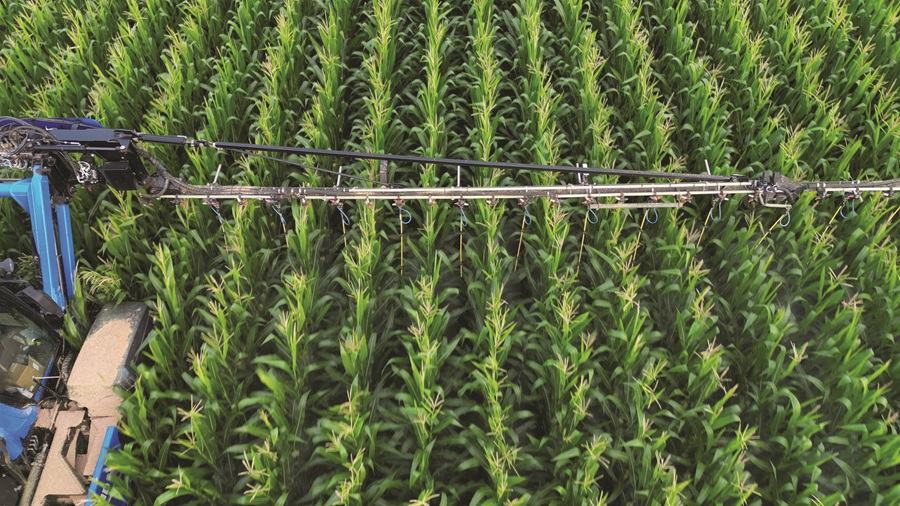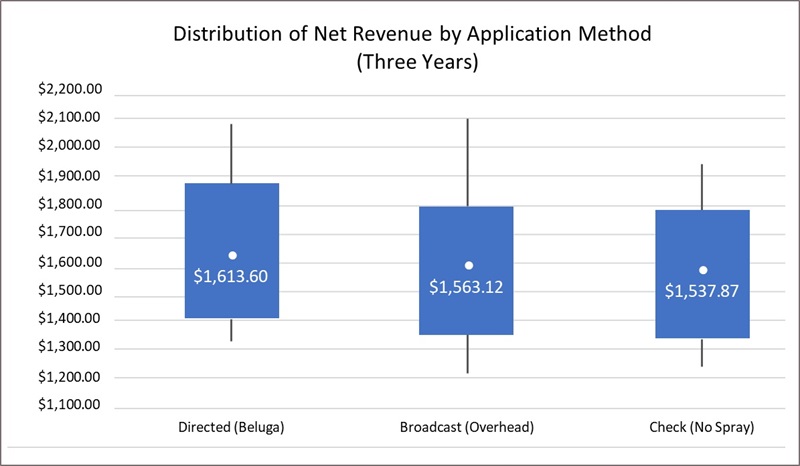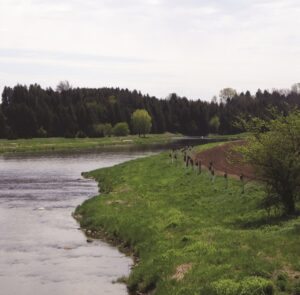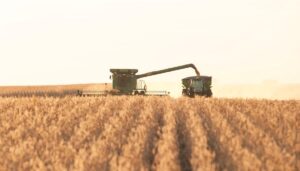Drop hoses
AGRONOMIC INFORMATION FROM ONTARIO'S CROP SPECIALISTS

Application Technology Specialist
IT’S AN OLD IDEA THAT’S NEW AGAIN. Why spray top-down through several feet of tassels and leaves only to cover the upward- facing surfaces when you can spray sideways a few inches and cover all surfaces? Well, mostly because drop hoses have traditionally been a pain to install, use, clean, and remove. But that’s no longer the case.
We performed a comparative application study and found that drop hoses provided a higher and more uniform degree of spray coverage (Methods for Applying Fungicides in Corn — Sprayers 101). From there, we’ve been running a long-term study in Southern Ontario to determine if one technology, the Beluga drop hose, could deliver on ease-of- use and better yields.
The study is taking place on 11.3 ha (28 acres) spanning two fields. The corn variety has been Pioneer P0720AM, with a Gibberella Ear Rot rating of 4. Four overhead treatments, four directed treatments, and four unsprayed checks were arranged in a random block design for each of two fungicide regimes selected by the grower cooperator (n=8 for each treatment per year). Each treatment area was between 1.05 and 1.10 acres. We’ve performed the study three years in a row.

Our primary objective was to protect against foliar disease, so the drop hoses were suspended so that the bottom nozzle was aimed approximately at the ear (for silk coverage) and the upper nozzle covered the higher foliage without being so high as to spray out of the canopy. Between gravity, the wake of the drop hose, and the initial angle of the spray, all surfaces received some degree of spray coverage, no matter their orientation or depth; this was confirmed using fluorescent dye.
Each treatment yielded corn with different moisture levels, so we chose not to compare bushels per acre harvested. Instead, we calculated net revenue for each year based on the current market values in the Port Rowan area. We normalized the treatment yields by moisture level and calculated their relative drying costs. Then, we accounted for the other inputs (see list below) using the following formula:
Net Revenue (CDN) = Seed Yield x Corn Sale Price — Drying Cost — Treatment Cost

The following box and whisker plot combines each treatment’s average net revenue from 2021-2023 in Canadian dollars. There were no statistically significant differences at a 95 per cent confidence level, but mean net revenue indicated compelling trends.
This translates to:
- Directed (Belugas) vs. Unsprayed check: Profit of $75.72/acre CAD
- Directed (Belugas) vs. Broadcast (Overhead): Profit of $50.48/acre CAD
- Broadcast (Overhead) vs. Unsprayed check: Profit of $25.24/acre CAD
And that means, on average, the drop hoses paid for themselves after 260 acres.
We have seen a consistent annual increase in mean net revenue from corn sprayed using directed application versus a conventional overhead broadcast. The low price point, ease of use, and high rate of return make this an attractive proposition in corn production.
The full report can be found at Sprayers101. com — Beluga Drop Hoses in Corn: Utility and Return on Investment (2023 Update). •











